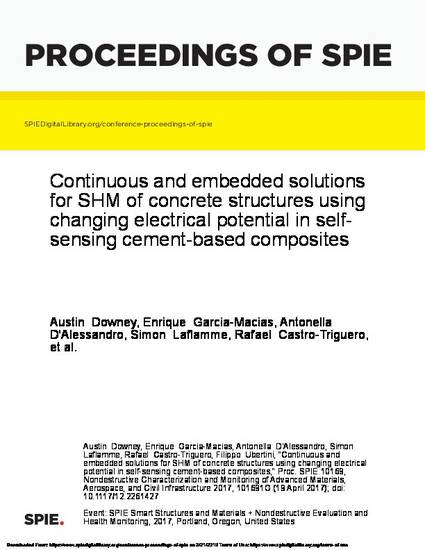
Interest in the concept of self-sensing structural materials has grown in recent years due to its potential to enable continuous low-cost monitoring of next-generation smart-structures. The development of cement-based smart sensors appears particularly well suited for monitoring applications due to their numerous possible field applications, their ease of use and long-term stability. Additionally, cement-based sensors offer a unique opportunity for structural health monitoring of civil structures because of their compatibility with new or existing infrastructure. Particularly, the addition of conductive carbon nanofillers into a cementitious matrix provides a self-sensing structural material with piezoresistive characteristics sensitive to deformations. The strain-sensing ability is achieved by correlating the external loads with the variation of specific electrical parameters, such as the electrical resistance or impedance. Selection of the correct electrical parameter for measurement to correlate with features of interest is required for the condition assessment task. In this paper, we investigate the potential of using altering electrical potential in cement-based materials doped with carbon nanotubes to measure strain and detect damage in concrete structures. Experimental validation is conducted on small-scale specimens including a steel-reinforced beam of conductive cement paste. Comparisons are made with constant electrical potential and current methods commonly found in the literature. Experimental results demonstrate the ability of the changing electrical potential at detecting features important for assessing the condition of a structure. Conference Pres
Available at: http://works.bepress.com/simon_laflamme/62/

Austin Downey, Enrique Garcia-Macias, Antonella D'Alessandro, Simon Laflamme, Rafael Castro-Triguero, Filippo Ubertini, "Continuous and embedded solutions for SHM of concrete structures using changing electrical potential in self-sensing cement-based composites", Proc. SPIE 10169, Nondestructive Characterization and Monitoring of Advanced Materials, Aerospace, and Civil Infrastructure 2017, 101691G (19 April 2017); doi: 10.1117/12.2261427. Posted with permission.